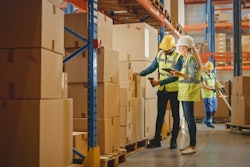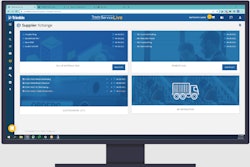Logistics companies are under increasing pressure to store and ship more goods despite a tough labor market and the often-prohibitive costs of new technology investments.
As a result, The Wall Street Journal reports that some firms are toying with smaller robots in the hopes that they help their current workforces operate more efficiently — at a fraction of the costs of automation systems.
"Collaborative" robots can cost tens of thousands of dollars instead of the millions often needed to automate a warehouse.
Automation systems also continue to encounter difficulty with certain tasks, such as picking an item off a warehouse shelf, while collaborative robots — equipped with navigation sensors, touch screens and cargo platforms — allow human workers to complete those tasks much more quickly.
Parcel giant DHL and online fulfillment firm Quiet Logistics, the Journal noted, utilize robots that help workers identify which items need to be shipped quickly.
The smaller robots can also be quickly deployed in virtually any facility. RK Logistics Group, for example, shuffles robots between people picking parts off shelves and others who pack and ship them.
RK officials indicated that its robots handle between 30 percent and half the items shipped each day -- at twice the speed of a human worker. Analysts predicted that the systems could be adopted more quickly as more and more companies experience their benefits.
“It’s not meant to replace human labor, but you can get greater throughput with the same size workforce,” IDC Manufacturing Insights analyst John Santagate told the paper.






















